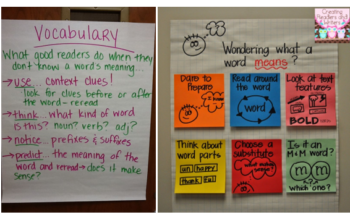
As a parent, you’ve probably found yourself staring at your child’s maths homework, wondering how something as simple as addition has evolved into a complex puzzle. Primary maths tuition is increasingly popular for kids aged 5 to 11, helping them grasp essential concepts like numbers, geometry, and basic problem-solving. But is it the right choice for your family? In this article, we’ll explore the ins and outs of primary maths tuition, from its benefits to practical tips on getting started. Let’s break it down in a way that’s easy to follow.
Why Primary Maths Tuition Matters
Primary school lays the groundwork for a child’s education, and maths is at the heart of it. Gone are the days when maths meant just rote memorization of tables. Today’s curriculum introduces fractions, decimals, and even introductory algebra early on. For many kids, the classroom environment— with its large groups and fixed pace—can leave gaps in understanding. That’s where primary maths tuition comes in. It provides targeted support to fill those gaps before they widen.
I recall chatting with a fellow parent at a school event whose son was struggling with basic subtraction. After a few months of tuition, he not only caught up but began enjoying the subject. It’s stories like these that highlight how tuition can prevent frustration from turning into a lifelong dislike for maths. Research from educational bodies suggests that early help in foundational subjects boosts overall academic confidence, setting kids up for success in secondary school and beyond.
Key Benefits of Enrolling in Tuition
One major advantage is personalized learning. In a typical classroom, teachers juggle multiple students, but a tutor can focus solely on your child’s needs. This means adapting lessons to their learning style—whether visual, hands-on, or through games. Tuition often turns abstract ideas into relatable scenarios, like using toys to explain division or shopping scenarios for money concepts.
Another perk is building self-assurance. Kids who feel competent in maths are more likely to participate in class and tackle challenges head-on. Plus, it prepares them for real-world applications. In an era where data and tech drive careers, strong maths skills are invaluable. Tuition can also help with exam prep, such as entrance tests for selective schools, without overwhelming the child.
How to Choose the Best Tuition Option
Selecting the right tuition isn’t straightforward—there’s a lot to consider. Start by assessing your child’s specific challenges. Is it overall support or targeted help with topics like multiplication? Seek recommendations from other parents or school teachers. Look for qualified tutors with backgrounds in education, perhaps certified in primary teaching methods.
Don’t overlook the importance of a good fit. Schedule trial sessions to see how the tutor engages your kid. A patient, enthusiastic instructor can make all the difference. For instance, one tutor I know uses storytelling to teach patterns, turning lessons into adventures rather than drills. Check reviews on local forums or websites to gauge reliability and effectiveness.
In-Person vs. Online Formats
Tuition comes in various forms, each with its pros and cons. In-person sessions, whether at home or in a center, offer direct interaction. Kids benefit from physical manipulatives like blocks or charts, which aid kinesthetic learners. However, scheduling and travel can be hurdles.
Online tuition has surged in popularity, thanks to tools like interactive whiteboards and video calls. It’s convenient—no need to rush across town—and often more affordable. Sessions are typically shorter to match young attention spans, and you can access expert tutors globally. A hybrid model combines both, providing flexibility. Whichever you choose, aim for regular sessions, say once or twice weekly, to maintain momentum.
Addressing Common Challenges
No solution is perfect, and tuition has its drawbacks. Cost is a frequent concern, with rates varying from affordable group classes to premium one-on-one sessions. If finances are tight, explore community programs, library resources, or free apps like those offering maths puzzles.
Another issue is potential overdependence. You want to foster independence, so encourage home practice alongside tuition. Parents play a crucial role here—integrate maths into daily life, like measuring ingredients while baking. Watch for signs of burnout; if your child seems stressed, adjust the intensity. Avoid tutors who emphasize memorization over comprehension, as modern education prioritizes understanding the ‘why’ behind concepts.
Real-Life Success Stories and Cultural Perspectives
Hearing from others can be motivating. Consider a young girl named Emily, who dreaded word problems. Her parents opted for group tuition with peer discussions, and soon she was solving them confidently, even volunteering answers in school. Online platforms have similar tales, especially in rural areas where access to quality tutors was limited before digital options.
Culturally, tuition varies. In Asian countries like Singapore, it’s commonplace, often rigorous to prepare for national exams. In Western contexts, the focus is more on enjoyment and holistic growth. For multicultural families, blending approaches can offer a balanced view, incorporating diverse problem-solving techniques.
Integrating Technology in Maths Learning
Tech is transforming tuition. Apps and software gamify lessons, making them engaging—think rewards for correct answers or virtual worlds built on maths challenges. AI tools adapt difficulty levels in real-time, ensuring kids aren’t bored or frustrated. However, technology should complement, not replace, human guidance. A skilled tutor uses it to track progress and provide feedback, while offering the emotional support screens can’t.
Final Thoughts: Making the Right Decision
Primary maths tuition is more than extra classes; it’s an investment in your child’s potential. It equips them with skills for academic and life success, fostering a positive attitude toward learning. If you’re considering it, start with a conversation with your child and their teacher. Try a low-commitment option like a workshop to test the waters.
Remember, every child is different—what works for one may need tweaking for another. Stay involved, communicate openly with tutors, and celebrate small wins. With the right approach, maths can become a source of joy rather than stress. If you’re ready to explore, local directories or online searches can point you toward reputable providers. Here’s to helping your little ones thrive!


